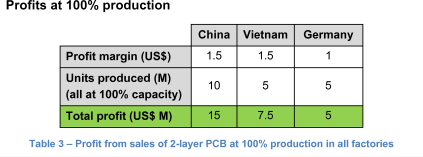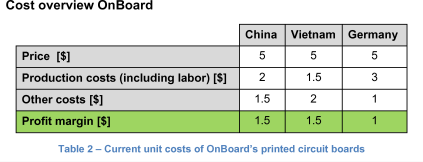Chip equity
37.9k
Times solved
Advanced
Difficulty
Our client is an electronics holding called Chip’n’Chip.
They want to invest in a Printed Circuit Board (PCB) manufacturer called OnBoard, and asked you whether it’s going to be a good investment.
How would you help them?
Case Comments
Further Questions
Assume that Chip’n’Chip decided to invest in OnBoard and that the utilization of the factories would be at 100%.
The profit of Chip’n’Chip would be around $9.1 m.
As Chip’n’Chip’s CEO, how would you negotiate with OnBoard to try making more profit?
Note for Interviewer
More questions to be added by you, interviewer!
At the end of the case, you will have the opportunity to suggest challenging questions about this case (to be asked for instance if the next interviewees solve the case very fast).
37.9k
Times solved
Advanced
Difficulty
Do you have questions on this case? Ask our community!






